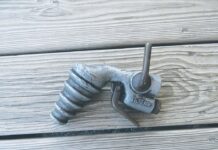Spring breezed by and suddenly it’s summer. If you didn’t find time to plant a garden this spring, don’t fret. It’s not too late to plant a vegetable garden. Gardeners can plant vegetables in July and August for a fall harvest.
What to plant
Days to Maturity is the number of days a plant needs to grow from seed to harvest. If you start the seed indoors and then transplant it in the garden, additional growing days are required. When determining what to plant, make sure there are enough growing days for plants to reach maturity before a hard freeze hits. Locate the Days to Maturity on the seed packet, and find your area’s frost schedule at the National Weather Service website. Count backward from the freeze date to ensure your plants have adequate time to grow to maturity.
TIP: Days to Maturity vary within a cultivar group. For example, cultivars of broccoli range from 70-200 Days to Maturity. If the number of growing days is limited, plant Broccoli Raab (70 days to maturity) or Sprouting Broccoli (120 days to maturity) to get a good crop before the hard freeze.
Vegetable crops are categorized as warm-season or cool-season. Warm-season crops, like sweet corn and tomatoes, are most successful when planted to reach maturity when the weather is warm. Cool-season crops are planted to reach maturity when the weather is cool. In zones 5 and 6, it’s best to plant cool-season crops in summer to reach maturity in fall.
Crops to plant in summer:
- Beets
- Broccoli
- Brussel Sprouts
- Cabbage
- Carrots
- Scallions
- Radicchio
- Arugula
- Spinach
- Chard
- Turnips
- Cauliflower
Extend the season
Season extenders can prolong the life of your garden. Row covers are made of lightweight fabric. They protect plants from frost damage while allowing sun, moisture and air to pass through. Row covers are inexpensive and can be reused for multiple seasons. Agribon row covers come in four grades: AG-19, AG-30, AG-50, AG-70. AG-19 protects plants to 28 F and provides 85 percent light transmission. AG-70 protects plants below 24 F and provides 30 percent light transmission.
Cold frames and low tunnels insulate and protect plants from harsh weather. The temperature inside cold frames and low tunnels can be up to 10 degrees warmer without adding supplemental heat. Homemade versions are easy to construct out of common hardware store materials or leftover items found around the farm. Download plans for a DIY low tunnel here.















This won’t work in the deep sourh!😱